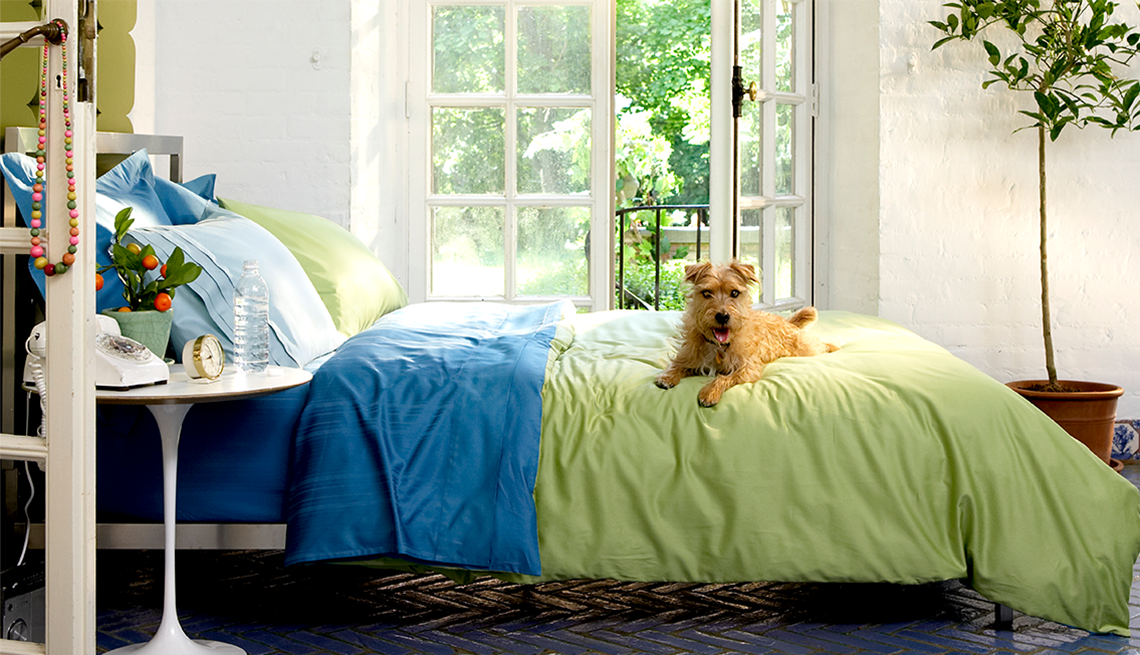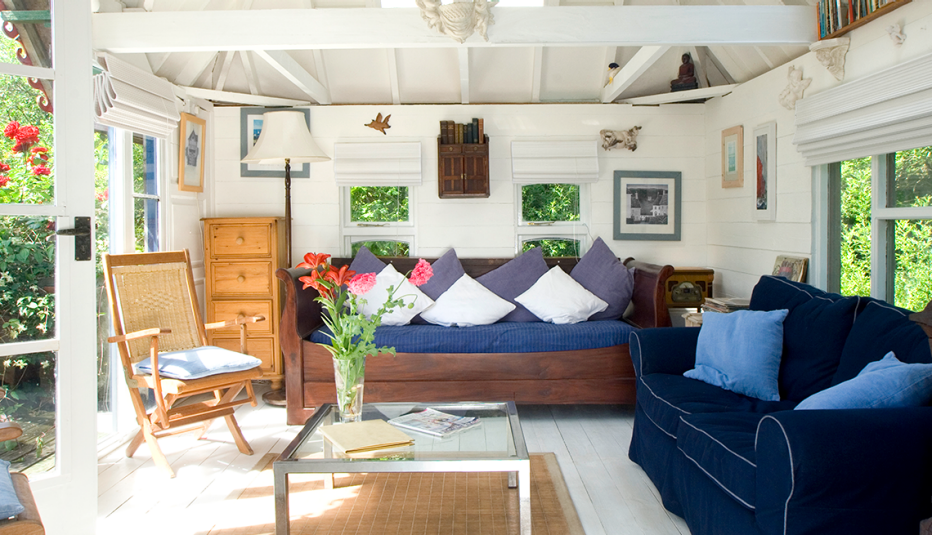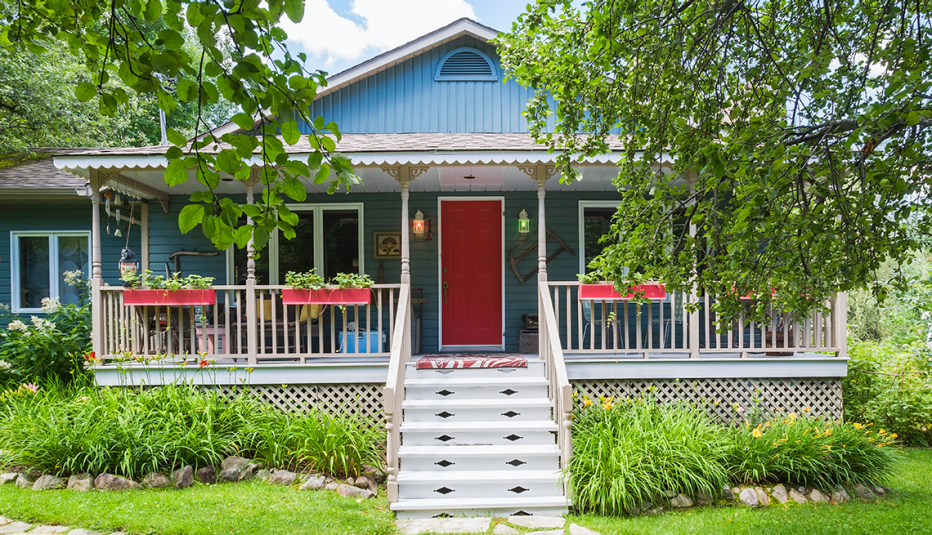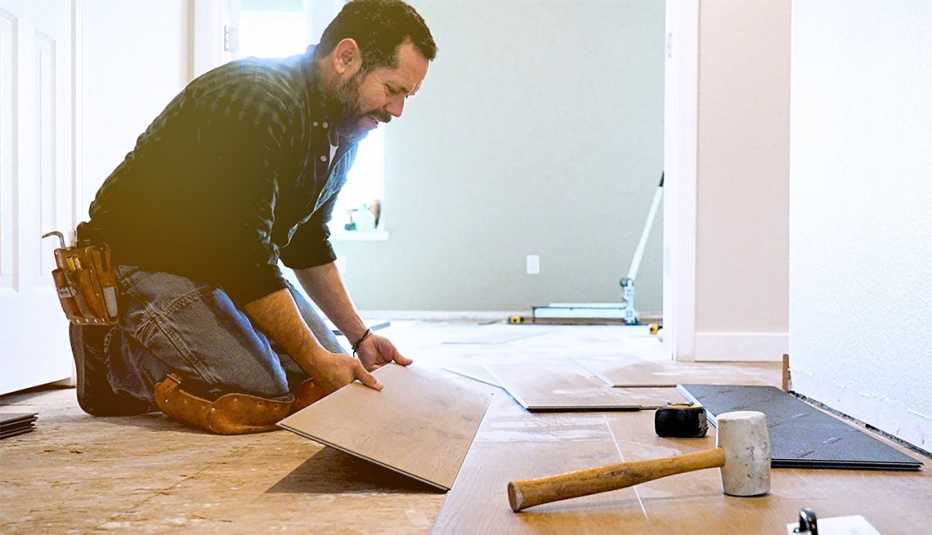Staying Fit
Let the sunshine in. If your home sometimes feels shuttered and gloomy, some simple changes can help. By inviting more natural light into a living space, you’ll create a lighter atmosphere and warm the interior.
“Having a space that feels bright and airy creates almost an effervescence in the home that creates its own energy,” says Nicole Gibbons, an interior designer at Nicole Gibbons Studio in New York City.


AARP Membership— $12 for your first year when you sign up for Automatic Renewal
Get instant access to members-only products and hundreds of discounts, a free second membership, and a subscription to AARP the Magazine.
Beyond aesthetics, you may also notice a change in well-being.
“Sunlight increases the amount of serotonin in our brains, and this is what makes us humans happy,” says Richard Hess, a designer in architecture, interiors and furniture for 22 years and director of career services at the NewSchool of Architecture and Design in San Diego. “It is scientifically proven that sunlight (vitamin D) elevates our moods daily” and decreases anxiety.
As an added bonus, bringing in more natural light may reduce the amount of electricity used for artificial light, resulting in energy conservation and lowering your home's total energy costs by as much as one-third, according to the National Institute of Building Sciences. An integrated design approach called “daylighting” that's used in construction and remodeling can also be incorporated into an existing home. It combines well-positioned windows and skylights with blinds or shades to reduce glare during the day, along with artificial lighting to provide sufficient ambient lighting at night.
Here are 10 ways to bring more natural light indoors:
1. Reconsider window treatments
The amount of sunlight entering through windows depends on the type of window covering used. Liners on curtains or drapes help keep out the cold, but also block sunlight. Gibbons is a big fan of sun shades, which are made of a reflective material to repel heat and strong sun, but still let in some light. In warmer months, consider sheer curtains —on their own or layered over shades or under drapes. If privacy isn’t a concern, you live on an upper floor or face a grand view, you may be able to skip window treatments all together.
2. Paint walls light colors
A home’s interior colors play a role in the flow of natural light. Gibbons, who is also the founder and CEO of the paint site Clare, recommends using a lighter color palette to help reflect light and brighten spaces where sunlight is absent or limited. Look for paint colors with a light reflectance value of 70 or higher. That information can be found on the back of a paint chip card or online. On the LRV scale of zero to 100, a higher number means the paint reflects more light; a lower number absorbs more light. Gibbons likes neutral, warm colors like whites, beiges and pale blues, grays and greens for interior walls.
Gibbons also suggests using an eggshell paint finish because it’s “matte enough so it doesn’t have an obvious sheen but has enough gloss to be wiped down.” A higher sheen may create a glare. For more color, paint one wall — such as behind your bed or sofa — in a different, bolder color or add color with movable accessories like pillows and curtains.








































































